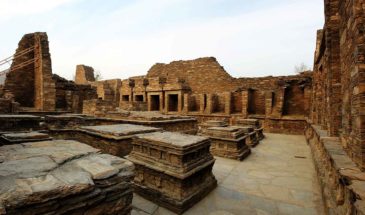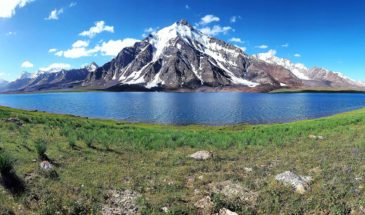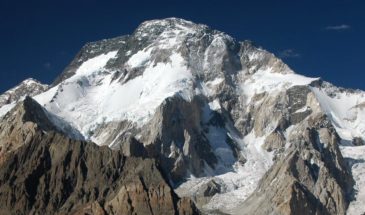The Islamic Republic of Pakistan is located in the northwestern part of the South Asian subcontinent. Pakistan has a 1,046 km coastline along the Arabian Sea and the Gulf of Oman. Pakistan covers 770,875 square kilometers of land and 25,220 square kilometers of water, making it the 36th largest nation in the world with a total area of 796,095 kilometers. The population of Pakistan is 220,892,340 people (2020) according to UN data. The country has the sixth-largest population in the world and the second-largest Muslim population. The country is divided into four provinces, one territory, and one capital territory for local administration.
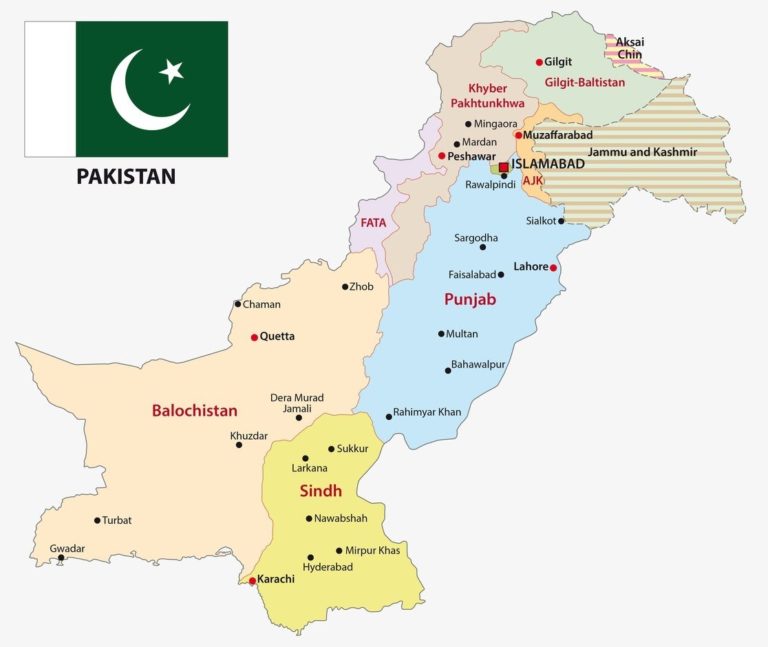
Grography
Pakistan occupies a position of great geostrategic importance, it is bordered by Afghanistan, Iran, India, and China. Pakistan is very close to Tajikistan, but the countries are separated by the Wakhan Corridor in Afghanistan.
Pakistan’s boundary with Iran is 909 kilometers in length, the boundary with Afghanistan is about 2,250 kilometers long, the boundary with India is 2912 kilometers in length, and the boundary with China is about 585 kilometers.
Pakistan is a land of plains, mountain ranges, deserts, and coastal belt. The country shares its Eastern Border called “Radcliffe Line” with India. On its Northern side, it has Sino-Pak Border. Its Western fronts include the boundaries of “Durand Line” with Afghanistan and “Gold Smith Line” with Iran. The Arabian Sea has limited the South of the country. With the total area of 9,96096 kilometers square, Pakistan emerges to be one of the most significant geographical patches of Asia.
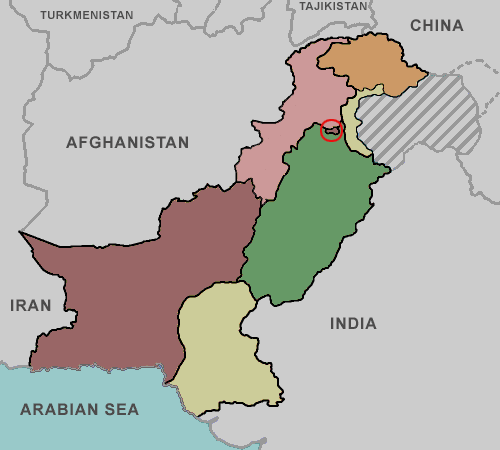
Climate:
The climate of Pakistan changes with its topography, but most of it consists of hot, dry deserts, while the northwest is temperate. In the mountainous north, though, the climate is harsh and considered as the Arctic.
Pakistan has four seasons: a cool and dry winter from December through February; a hot and dry spring from March through May; the summer/rainy season from June through September; and the monsoon period of October and November.
Landscape:
Pakistan holds a rich diversity of landscapes, starting from the northwest, the mighty Pamirs and Karakorum range through a network of mountain ranges, a complex of valleys, and plateaus, down to the remarkably even surface of the fertile Indus River plain, which drains southward into the Arabian Sea. It also contains the ancient Silk Road, Khyber Pass, Lofty high peaks such as K2 and Nanga Parbat, and the ancient site of Mahenjodarp marks one of the cradles of civilization.
Physical features of Pakistan
So here are four physical features of Pakistan:
- Deserts
- Plains
- Mountains
- Plateaus
Mountains:
There are three distinct mountain ranges:
- Northern Mountains
- Karakorum Ranges
- Himalaya Ranges
- North Western Mountains
- Hindukush
- Western Mountains
- Safed Koh Ranges
- Waziristan Hills
- Suleman and Kirthar Range
Indus Plains:
The Indus Plain is compromises of 20% of Pakistan. The Indus Plain is divided into three parts:
- Upper Indus Plain
The upper Indus Plain is Extends from Attock to Kot. Jhelum, Chenab, Ravi, and Sutlej are the Eastern tributaries of river Indus. The area between the two tributaries is called Doab. All the tributaries meet at the point called Panjnad.
- Lower Indus Plain
It extends from Mithan Kot to Thatta. This is the old stage of the river Indus.
- Deltaic Plain
The total length of the Deltaic Plain is 1000 km. While 700 Km lies in Baluchistan and about 300 km lies in Sindh.Thatta and Badin districts in Sindh. Mangrove forests are the significant feature of the Sindh Deltaic plain. The coastal area lies in Baluchistan is called Makran coastal plain.
Deserts :
There are four desserts which are :
- Thar
Thar desert lies in the Southeast of Pakistan. The desert is the extension of the Rajasthan desert of India. Thal
Thal desert lies between River Indus and Jhelum.
- Cholistan
The Cholistan Desert is locally known as “Rohi ‘and covers the area of Bahawalpur, Punjab. It adjoins the Thar Desert, extending over to Sindh and into India. Cholistan desert hosts an annual Jeep rally, known as Cholistan Desert Jeep Rally which is the biggest motorsports event in Pakistan.
- Kharan
The Kharan Desert is located in the northwest Balochistan.
Plateaus:
There are two Plateaus in Pakistan:
- Balochistan Plateau
- Pothohar Plateau and Salt Range
Provinces of Pakistan :
Pakistan is divided into five main provinces :
- Sindh Province
- Balochistan Province
- Punjab Province
- Khyber Pakhtunkhwa Province
- Gilgit Baltistan Province
Sindh :
The province of Sindh, which is located in the southeastern part of the country, is bordered to the northeast by Punjab, to the north and west by Balochistan, to the south by the Arabian Sea, and to the east by the Indian states of Gujarat and Rajasthan. Karachi is the capital city of the province of Sindh. The province occupies an area of about 54,407 square miles and is home to a population of about 16,093,786.
Balochistan
The province of Balochistan is located on the western part of the country and is bordered by Sindh to the southeast, by Punjab to the east, by Khyber Pakhtunkhwa to the northeast, and the south by the Arabian Sea. The provincial capital is Quetta. It occupies an area of about 134,051 square miles and is home to a population of about 412,232.
Punjab
Punjab province is located in the eastern part of Pakistan and is bordered to the south by Sindh province, to the west by Khyber Pakhtunkhwa, and Balochistan, by Islamabad and Azad Kashmir to the north, by the Indian states of Jammu and Kashmir and Punjab to the northeast and Rajasthan to the east. Lahore is the provincial capital. The term Punjab means “Five rivers” in reference to Beas, Jhelum, Ravi, Chenab, and Sutlej rivers that drain the area. The province of Punjab occupies an area of 79,284 square miles making it the second-largest province and is home to a population of about 220,892,340.
Khyber Pakhtunkhwa
The Khyber Pakhtunkhwa is bordered by Azad Kashmir to the northeast and east, to the west and north by Afghanistan, to the southwest by Balochistan, and to the southeast by Punjab. The capital of Khyber Pakhtunkhwa is Peshawar. The province occupies an area of about 28,773 square miles and is home to a population of about 21,392,000.
Gilgit Baltistan
Gilgit Baltistan borders Khyber Pakhtunkhwa to the west, Afghanistan’s Wakhan Corridor to the North, China to the Northeast, Azad Kashmir to the Southeast, and Indian occupied Jammu and Kashmir to the east and southeast. The Gilgit Baltistan occupies an area of bout 72,971 square kilometers and is home to a population of about 1.249 Million. Its administrative center is the city of Gigit. Gilgit Baltistan is located between the great mountain ranges of the world, the Himalayas, Karakorum, Pamir, and Hindukush.
Here are some interesting facts about Pakistan:
- Pakistan’s Sialkot produces over half of the world’s footballs:
Sialkot is located in Pakistan, is the world’s largest producer of handsewn footballs. Local factories in the region produce 40-60 million footballs a year, which is roughly 50-70% of the world’s total production.
- It’s one of the world nuclear powers
Pakistan is the world’s first Islamic country to attain nuclear power. Pakistan is one of the few nations in the world that has nuclear warheads. In fact, only eight countries in the world are known to have nuclear weapons, even though it’s suspected that Israel also has nuclear warheads, making it nine countries in total.
- The highest paved international road
Pakistan has the highest paved international road – The Karakoram Highway (KKH). The Karakoram Highway connects Pakistan and China after passing through the Karakoram mountain range at 4714 meters, making it the highest paved international road in the world.
- The fourth-largest irrigation system in the world
Pakistan has the largest canal-based irrigation system in the world. As most of Pakistan’s population depend on a livelihood in agriculture the country had to develop a complex and massive system of irrigation to cultivate 202,000 square kilometers of land. The system runs on the Indus Basin.
- The world’s largest ambulance network
Pakistan has the world’s largest ambulance network. Pakistan’s Edhi Foundation, which is also listed in the Guinness Book of World Records, operates the network.
- Two Pakistanis have won the Nobel Peace Prize
Malala Yousafzai received the Nobel Peace Prize in 2014 jointly with the Indian Kailash Satyarthi “for their struggle against the suppression of children and young people and for the right of all children to education”. Additionally, Abdus Salam received the Nobel Prize in Physics in 1979 together with Sheldon Lee Glashow and Steven Weinberg.
- World’s highest ATM
Pakistan boasts the world’s highest ATM (automated teller machine). The ATM is operated by the National Bank of Pakistan and it is installed at a height of 16,007 feet above sea level, at the Pak-China border, Khunjerab Pass.
- K2 is the highest mountain in Pakistan
There are 5 mountains over 8000 meters in Pakistan and the tallest mountain is known as K2, which is the second-highest mountain in the world, after Mount Everest. The country is renowned for its beautiful and wild nature.
- There are six UNESCO World heritage sites in Pakistan
The first sites in Pakistan to gain the status of a UNESCO World Heritage Site were Archaeological Ruins at Moenjodaro, Buddhist Ruins of Takht-i-Bahi and Neighbouring City Remains at Sahr-i-Bahlol, and Taxila. In total, there are six World Heritage Sites in the country and many more on the tentative list. Pakistan is rich in history and culture, and the following sites are all impressive and worth visiting.
- Archaeological Ruins at Moenjodaro
- Taxila
- Buddhist Ruins of Takht-i-Bahi and Neighbouring City Remains at Sahr-i-Bahlol
- Fort and Shalimar
- Gardens Historical Monuments at Makli
- Rohtas Fort
- The second-largest salt mines
The ‘Khewra Salt Mine’ in Pakistan is the second-largest and oldest salt mine in the world.
- The Tharparkar desert is the only fertile desert in the world
Pakistan has the only fertile desert in the world – the Tharparkar desert – located in Sindh province. Deserts are known to be arid and non-fertile lands, but the Tharparkar desert is an exception. It’s the only fertile desert in the world and by size, it ranks as the 7th largest desert in the world.
- The world’s seventh-largest standing force
Pakistani armed forces are internationally ranked as the seventh-largest in the world, with the manpower of 642,000. Pakistan provides the largest number of troops to serve the UN peacekeeping missions.
- Fourth smartest people in the world
Pakistanis are the fourth-most intelligent people in the world, according to poll results gathered from 125 countries by the Institute of European Business Administration. Pakistan has the seventh largest collection of scientists and engineers.
- Miraculous, breath-taking beauty
The world’s longest glacial system outside the polar regions – the Biafo Glacier – is in Pakistan.
- The world’s largest manmade forest
The once world’s largest man-made forest is in Pakistan – the Changa Manga forest (12,423 acres in area). It is named after two brother dacoits, the Changa Manga forest was originally planted in 1866 by British foresters.
- The Shah Faisal Mosque can hold nearly 100 000 worshippers
The Shah Faisal Mosque in Pakistan can accommodate 100,000 worshipers at a time. It was the largest mosque in the world from 1986 until 1993.
- Late Air Commodore, MM Alam
MM Alam, late Air Commodore from Pakistan, is known to have shot five planes in less than a minute during the Indo-Pakistani War of 1965.
Tourism in Pakistan
Pakistan is declared as the world’s third-highest potential adventure for the year 2020 by the British Backpackers Society (BBS).”After counting the votes from its membership of adventure travel experts from around the world, the BBS is delighted to announce that Pakistan has been awarded third place in the ranking,” said a statement issued by the BBS. Talking to APP, Samuel Joynson of the BBS said that Pakistan is a travel gem and is one of the world’s most exciting travel destinations right now.
A country with diverse culture and natural beauty, Pakistan is a heaven for any tourist. Pakistan offers much more to travelers and tourists from touring the Karakorum highway, to visit the busy and crowded markets of Karachi, taste the delegate flavors of Punjab in Lahore, grab tea with some of the friendly people that you will ever meet on the story-tellers street of Peshawar.
From majestic mountains to sandy beaches, rich history, color full and diverse cultures, home of the oldest civilization and flourishing metro bulletins, delegate flavors of food, and growing business avenues. We have it all in Pakistan, the land of the pure.
Starting with the mountains of Pakistan, one of the greatest blessings that 8 out of the world’s 20 tallest mountains nature has bestowed on the country, and with mountaineering and mountain trekking infrastructure, The northern side of Pakistan is the epicenter of the world’s trekking, adventure, and mountain tourism. And the sandy mountains of the south, the Hingol National Park in Balochistan is another blessing of nature. And while in the Balochistan, how can we forget about the beaches. The entire coast of the Arabian Sea, with the right attitude and vision, becomes one of the tourist’s main beach destinations of all seasons. Pakistan is also gifted with breathtaking, eye-catching, and beautiful landscapes of Skardu, Hunza, and Swat. Pakistan is also rich in art and the culture, both Sindh and the capital of the culture, Lahore has so much to offer. The craftsmanship, artistry, and handicraft are unlike anywhere in the world.
Pakistan has such an incredible Islamic heritage. Sufi trail of Sindh can appeal not just to Muslim tourists, but any tourists interested in history and culture. Pakistan also happens to be the birthplace of Sikhism, and the travels of Guru Nanak. It’s also home to some of the most important Hindu sites. As well as Buddist stupas, and the remains of the richest Buddhist heritage. Pakistan is the country where the world’s oldest civilization, the Indus valley civilization was found. And of course, not forget about the food. Pakistan has such a rich culture of food and cuisines. And the diversity from province to province is just surprising.
Here is the list of some of the famous tourist’s destinations in Pakistan:
Our Destinations
We are very experienced in tour and travel agency!



